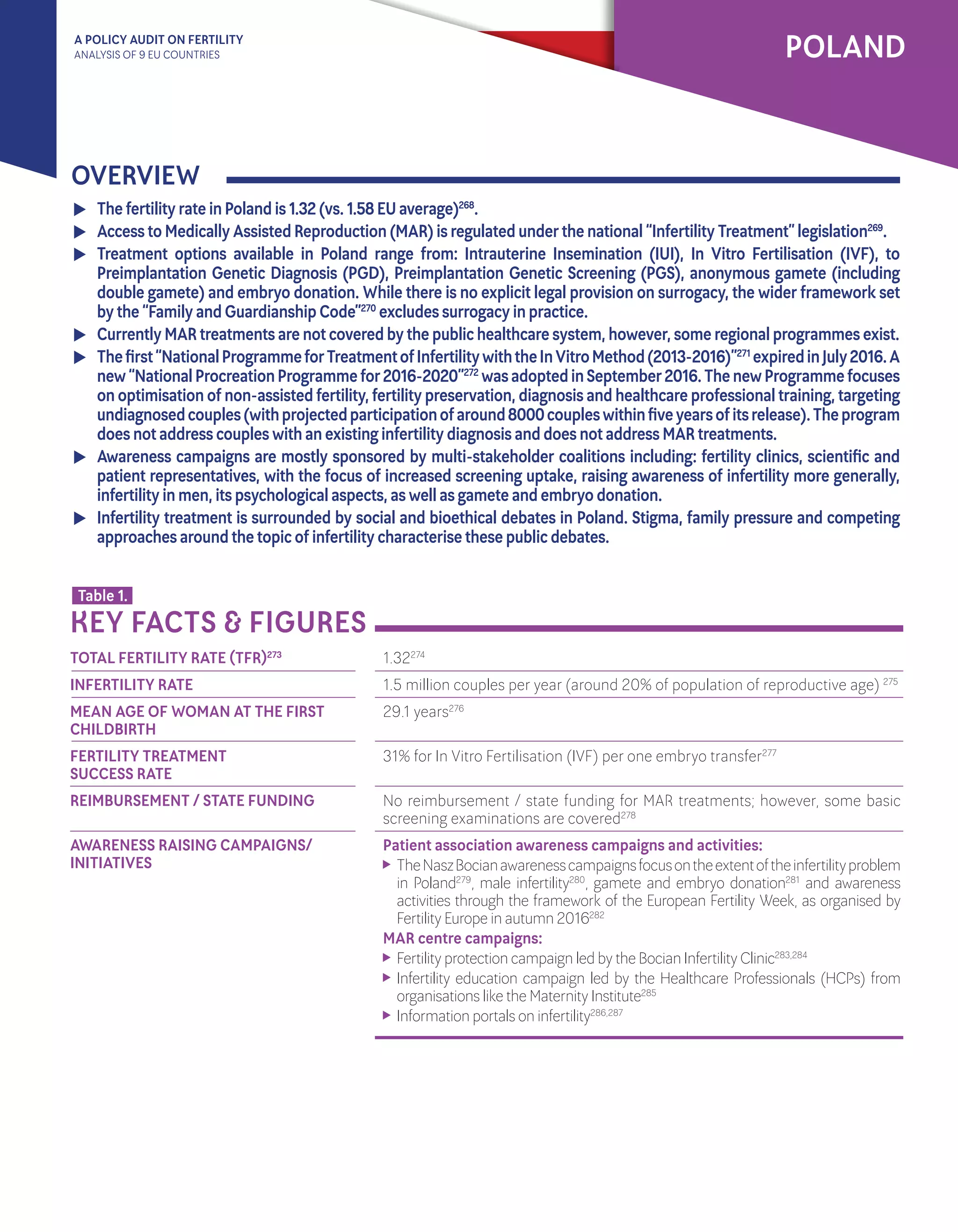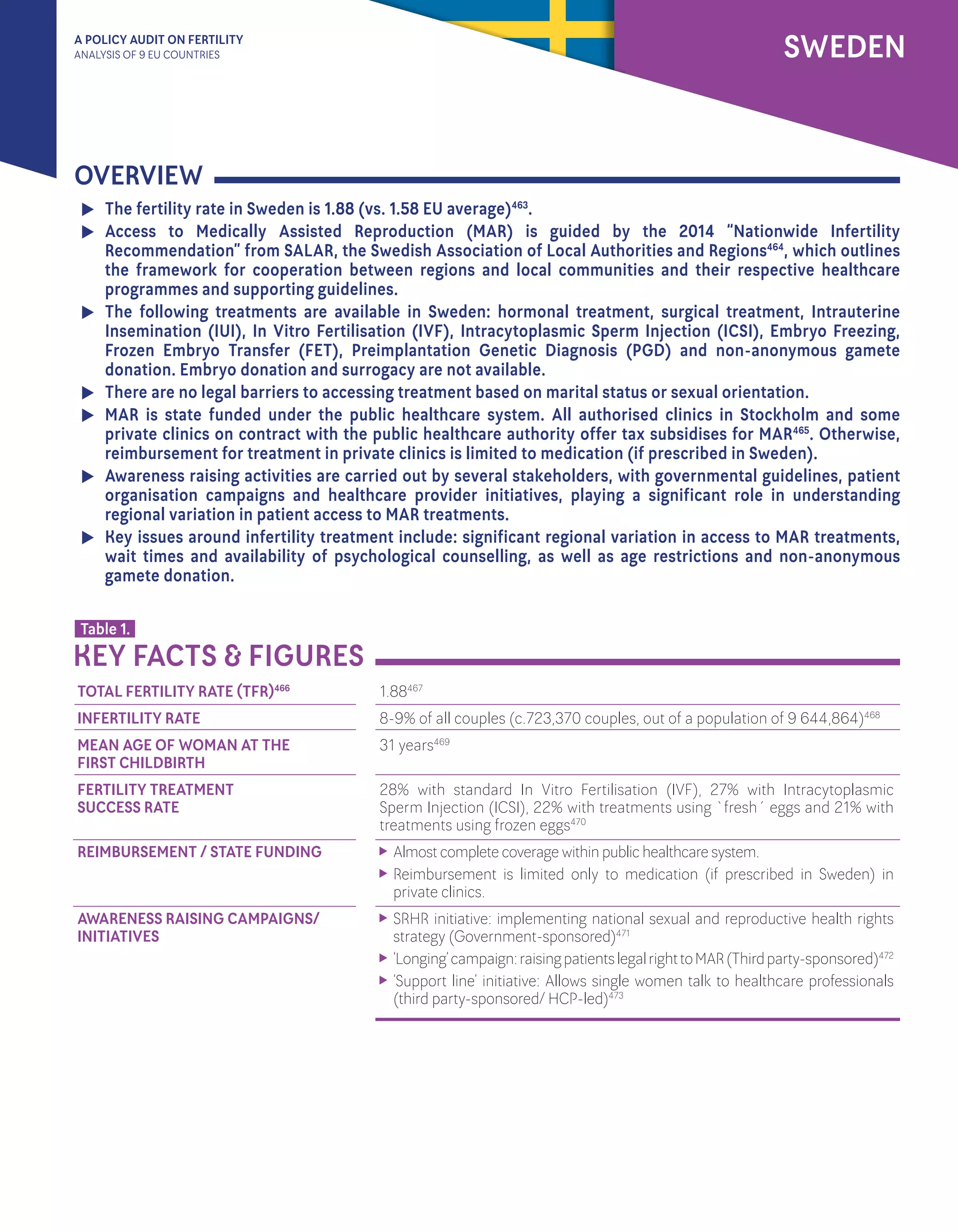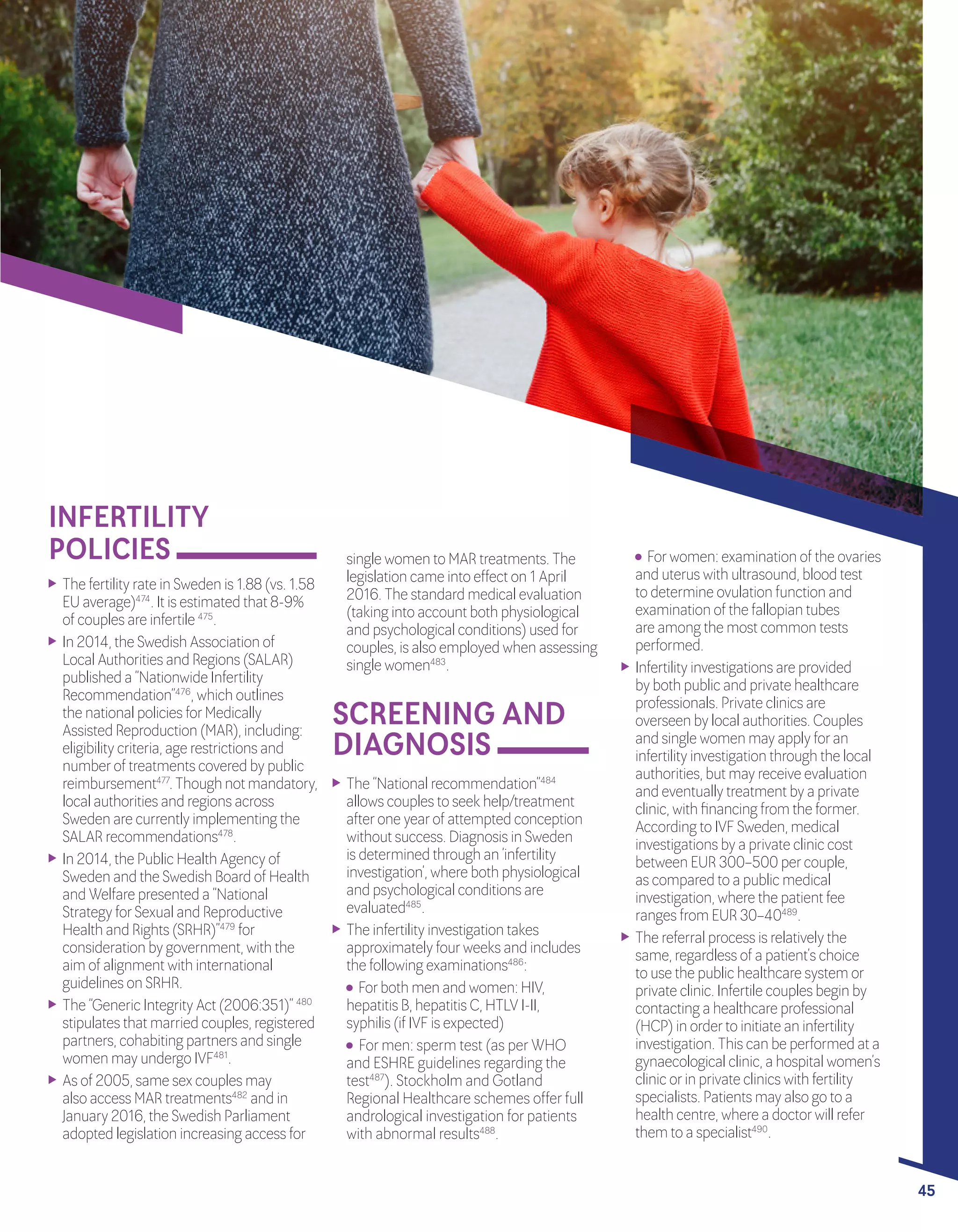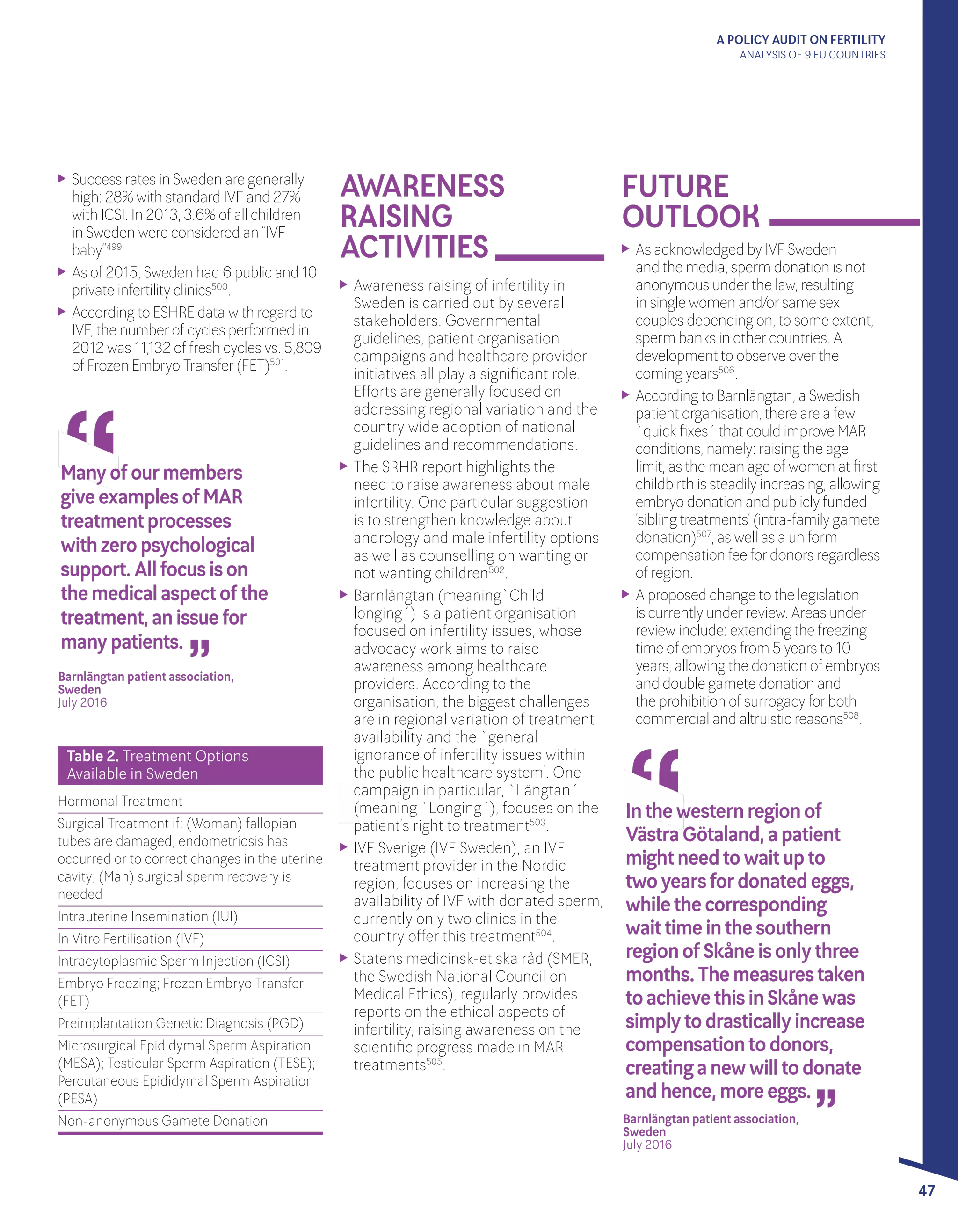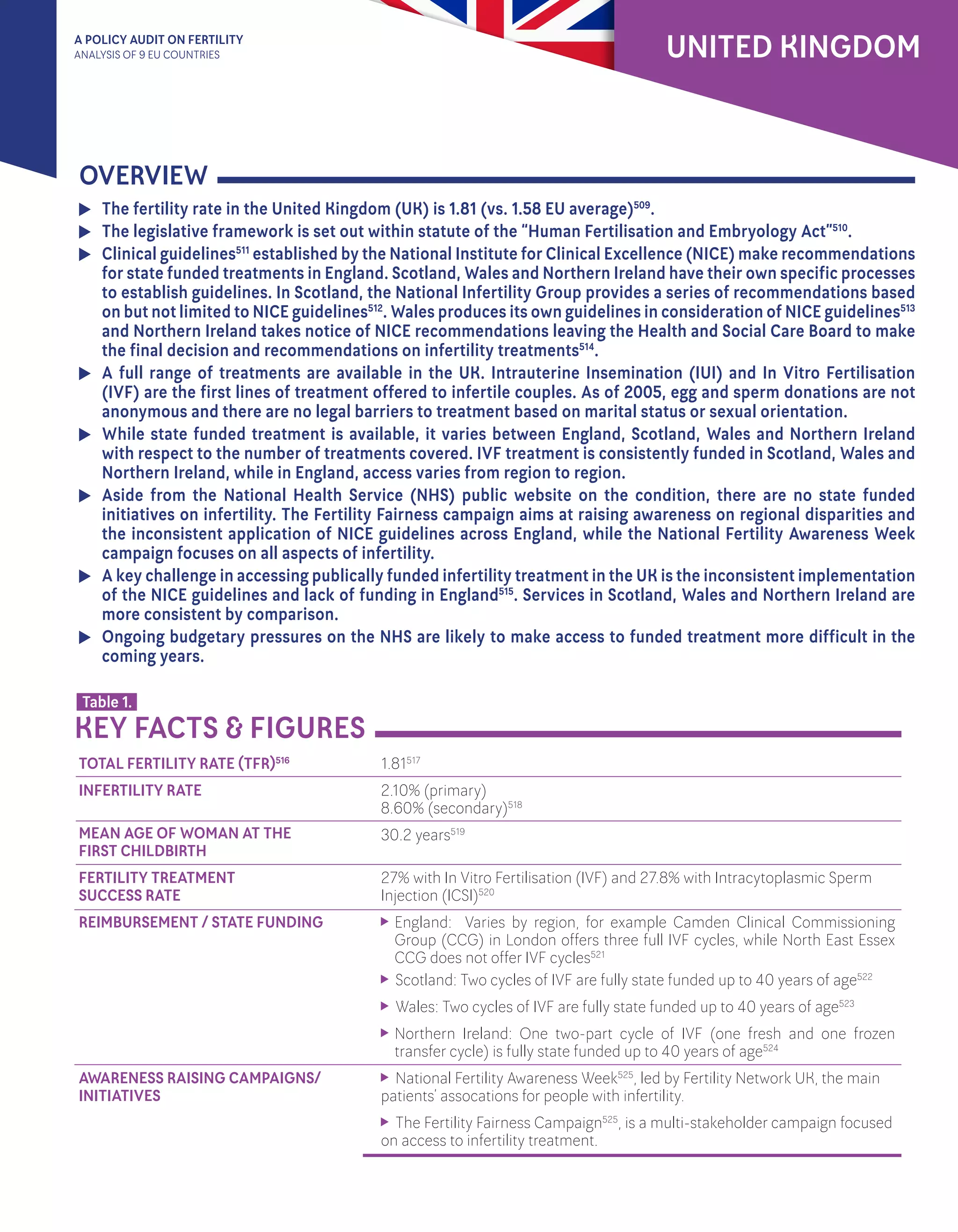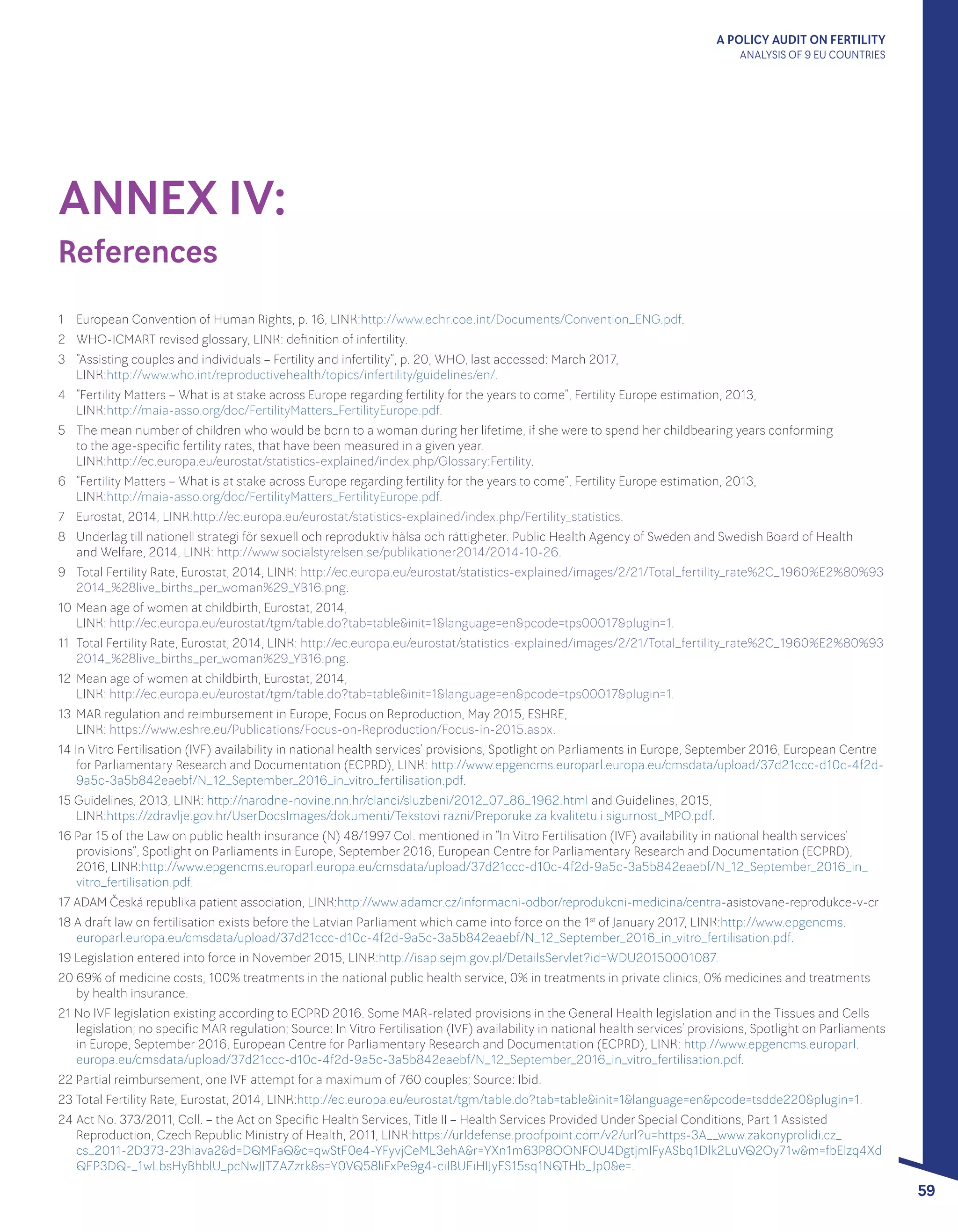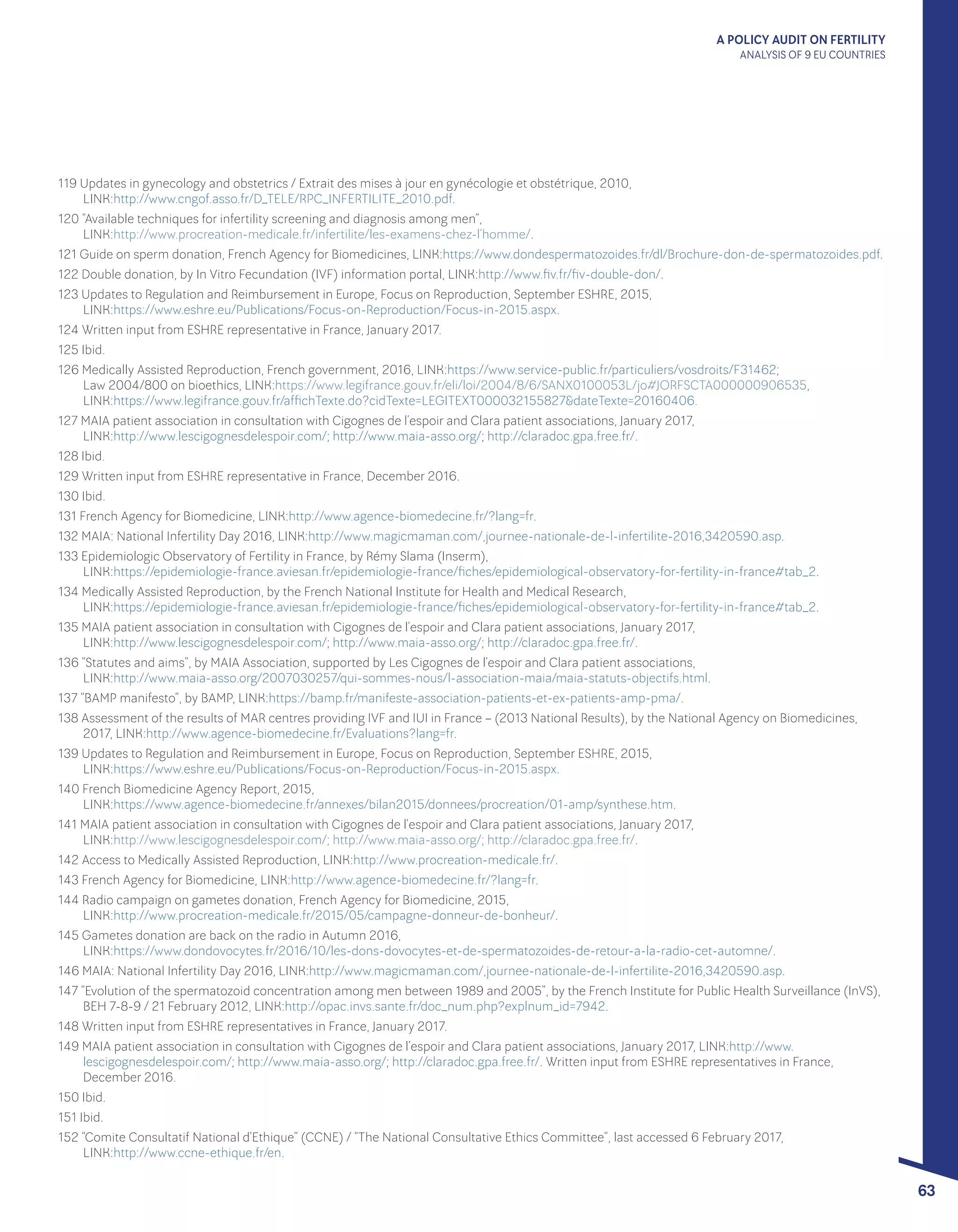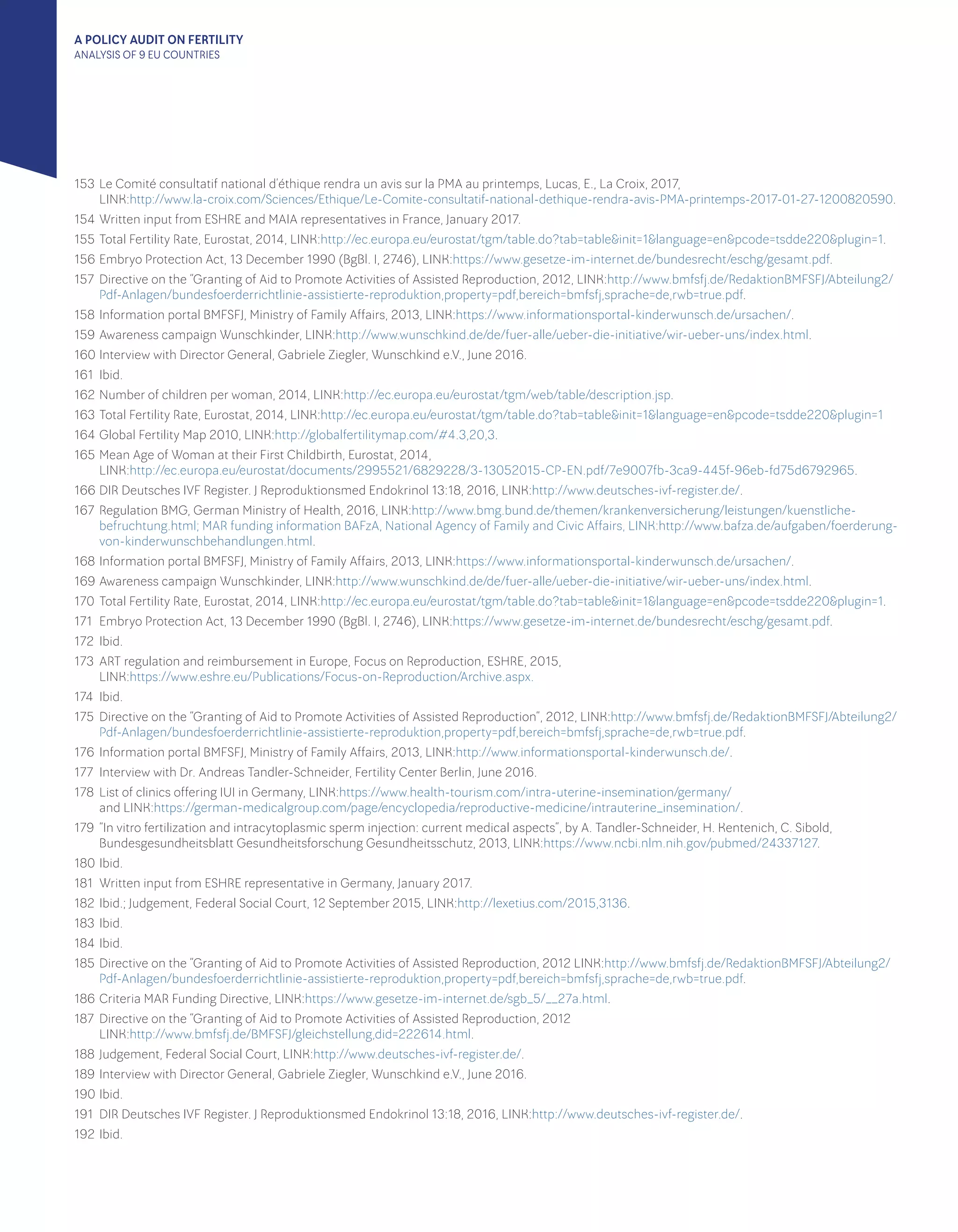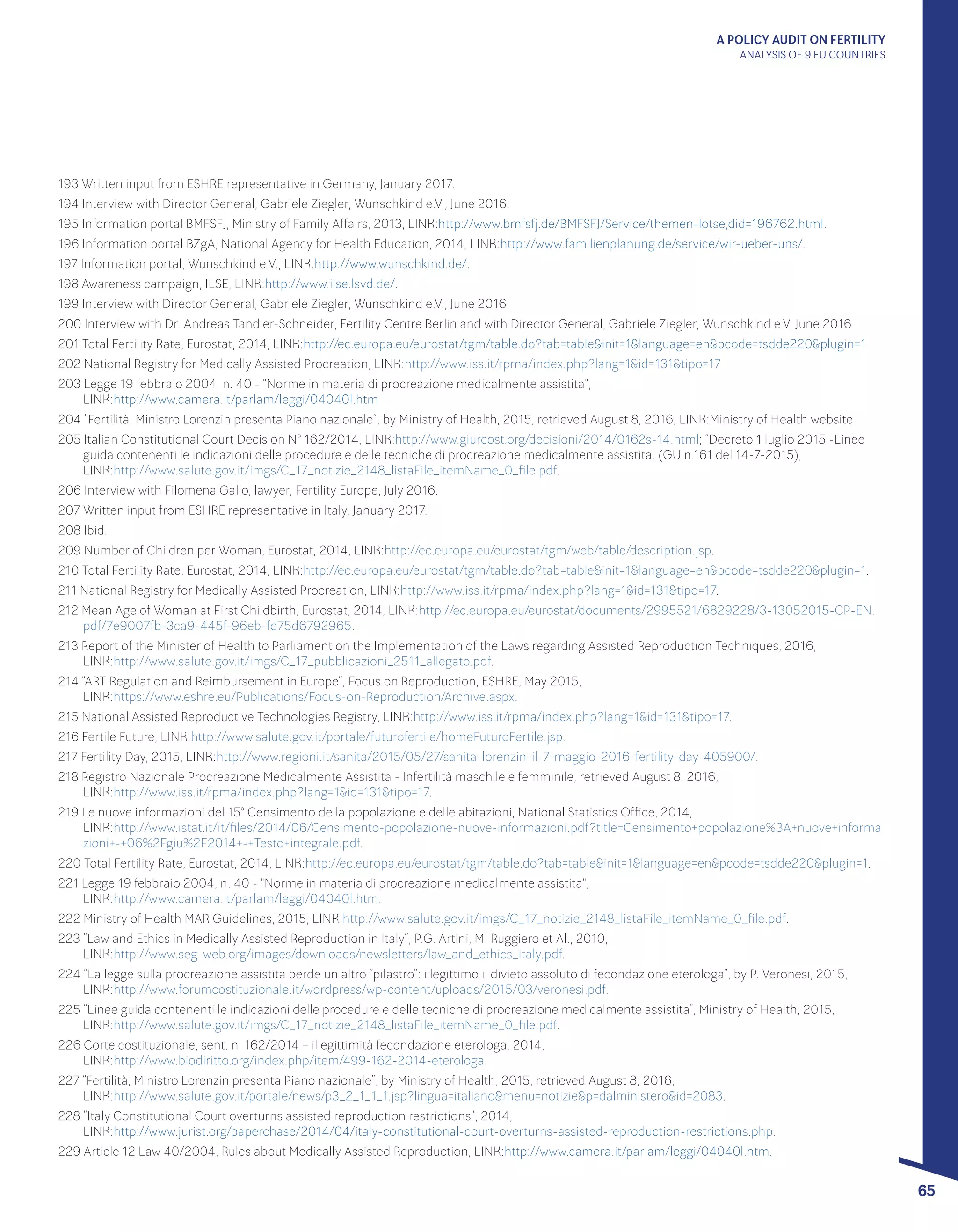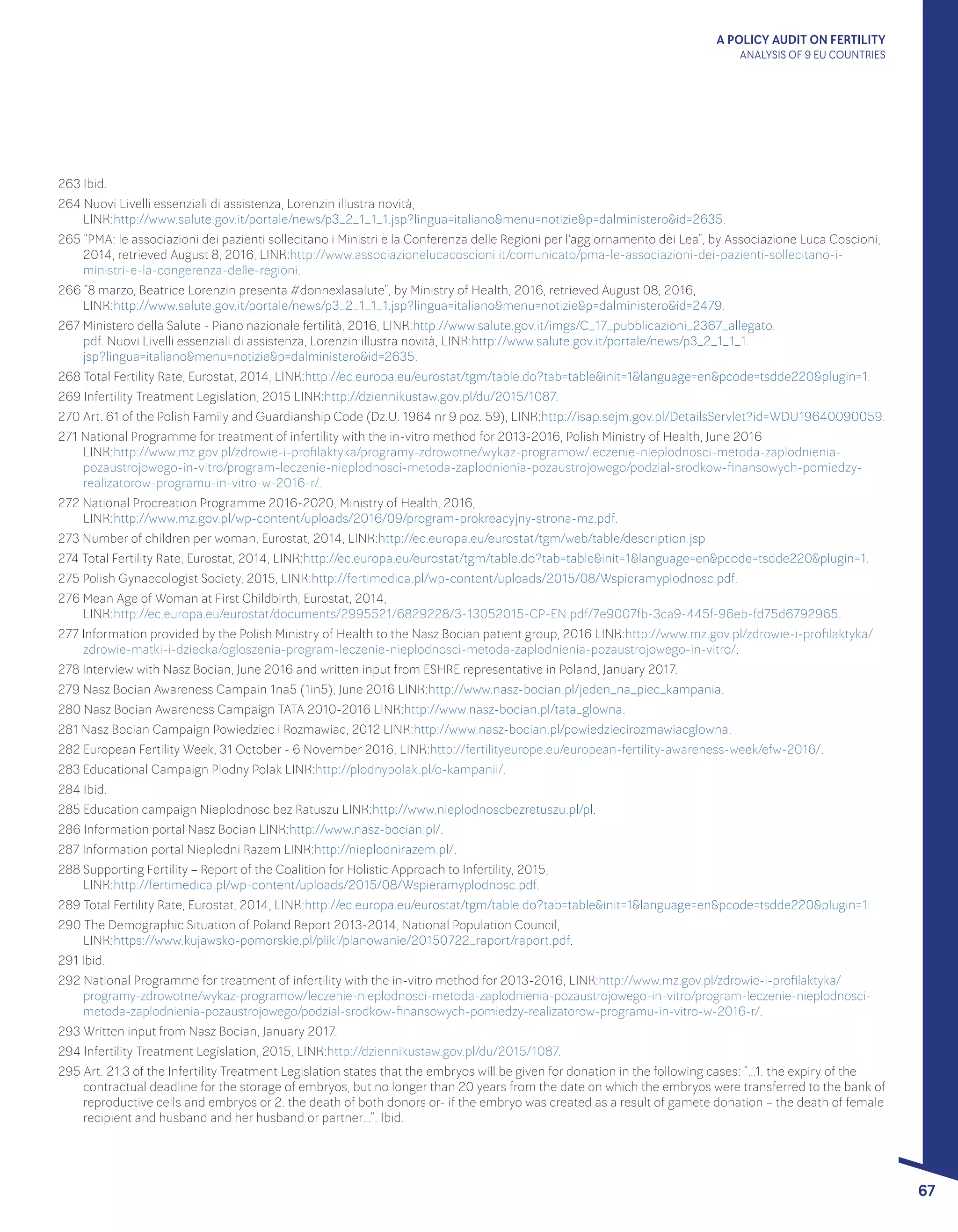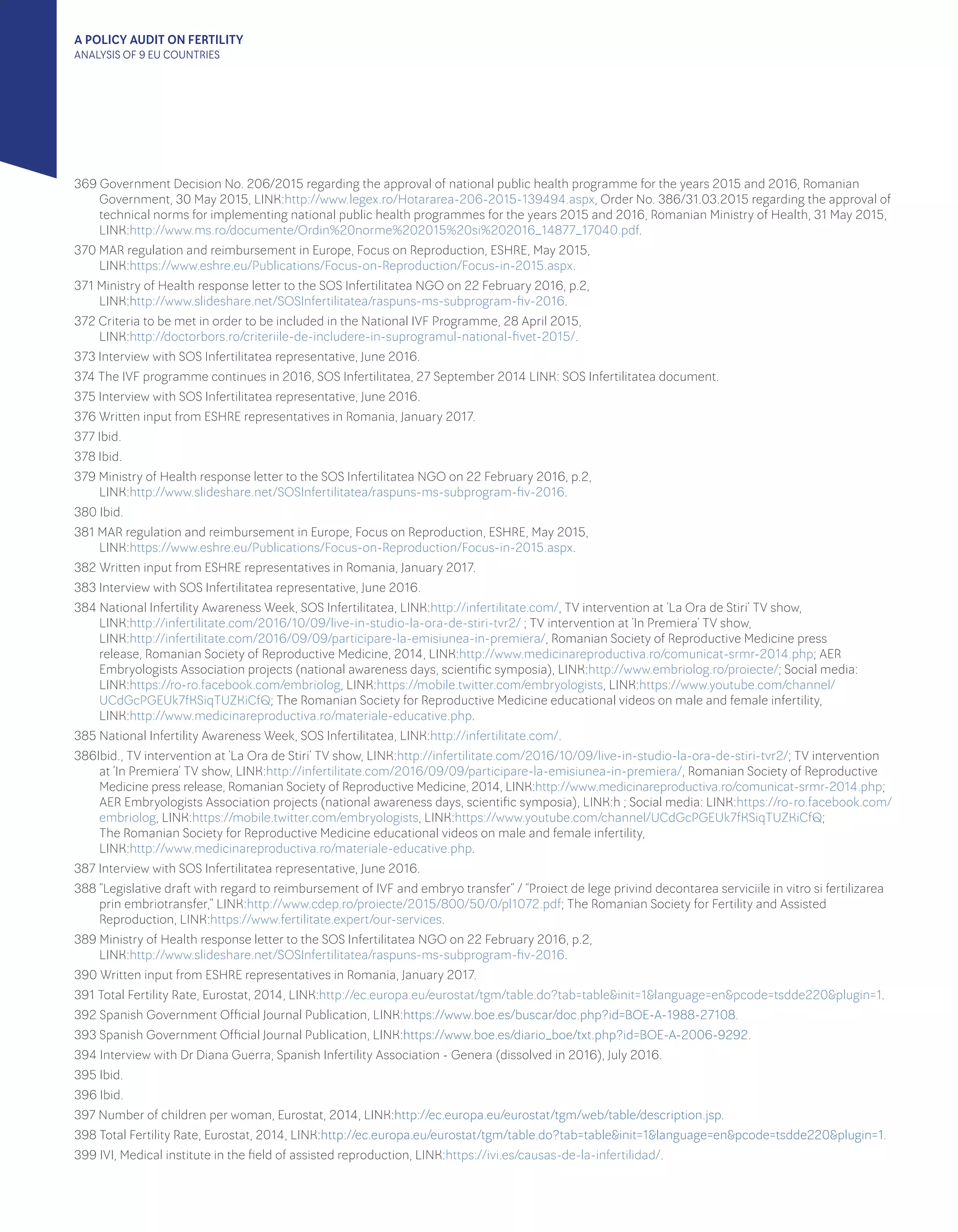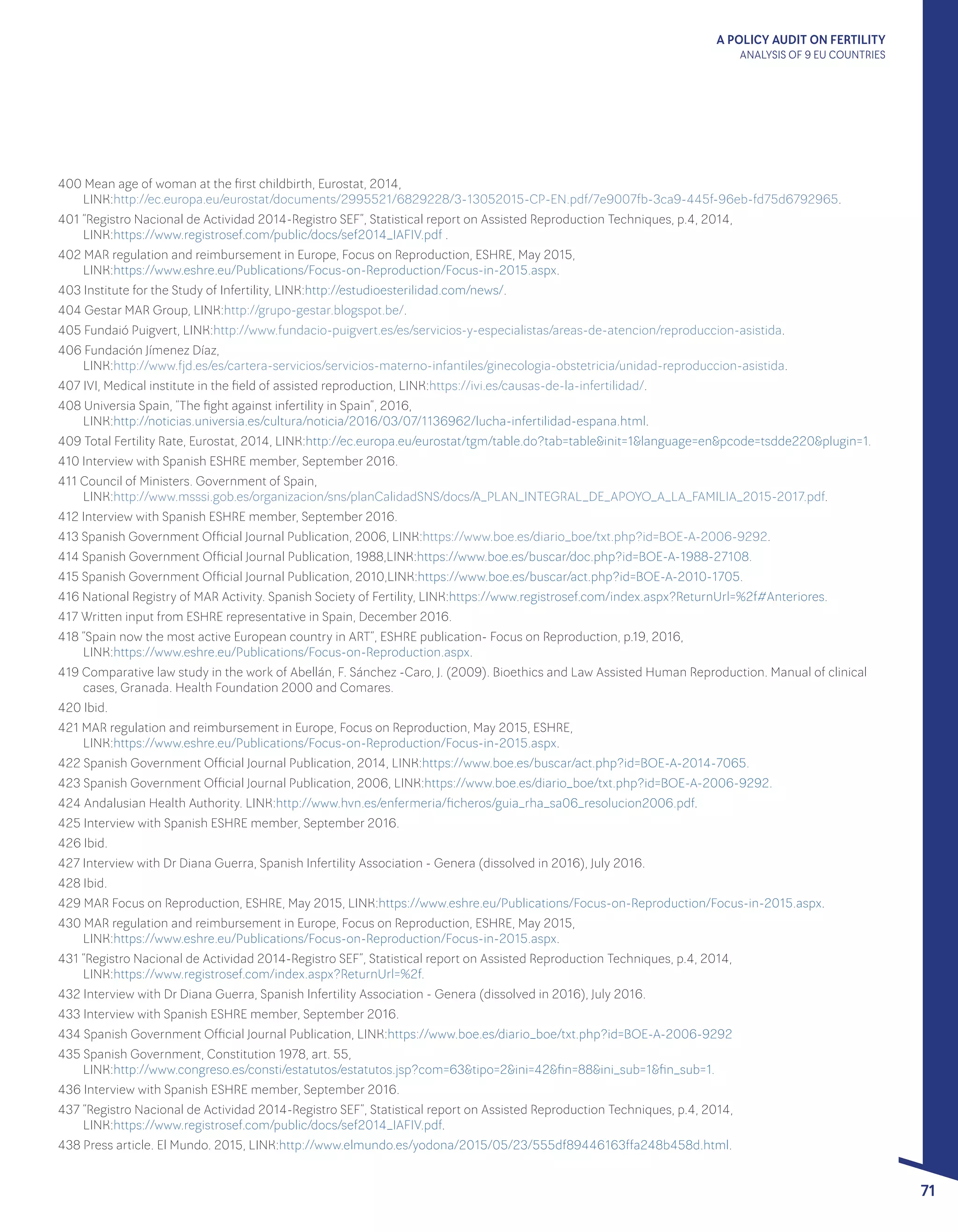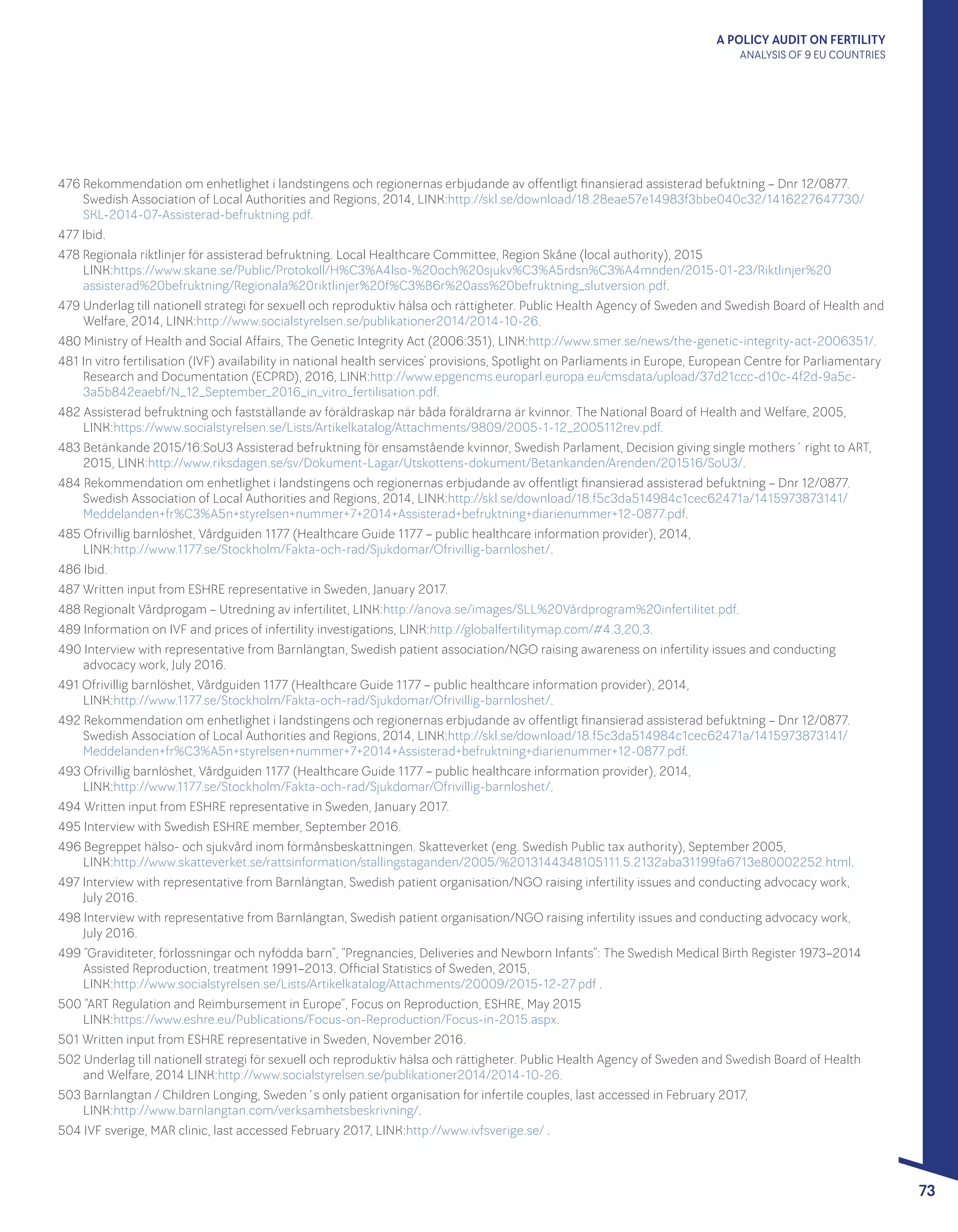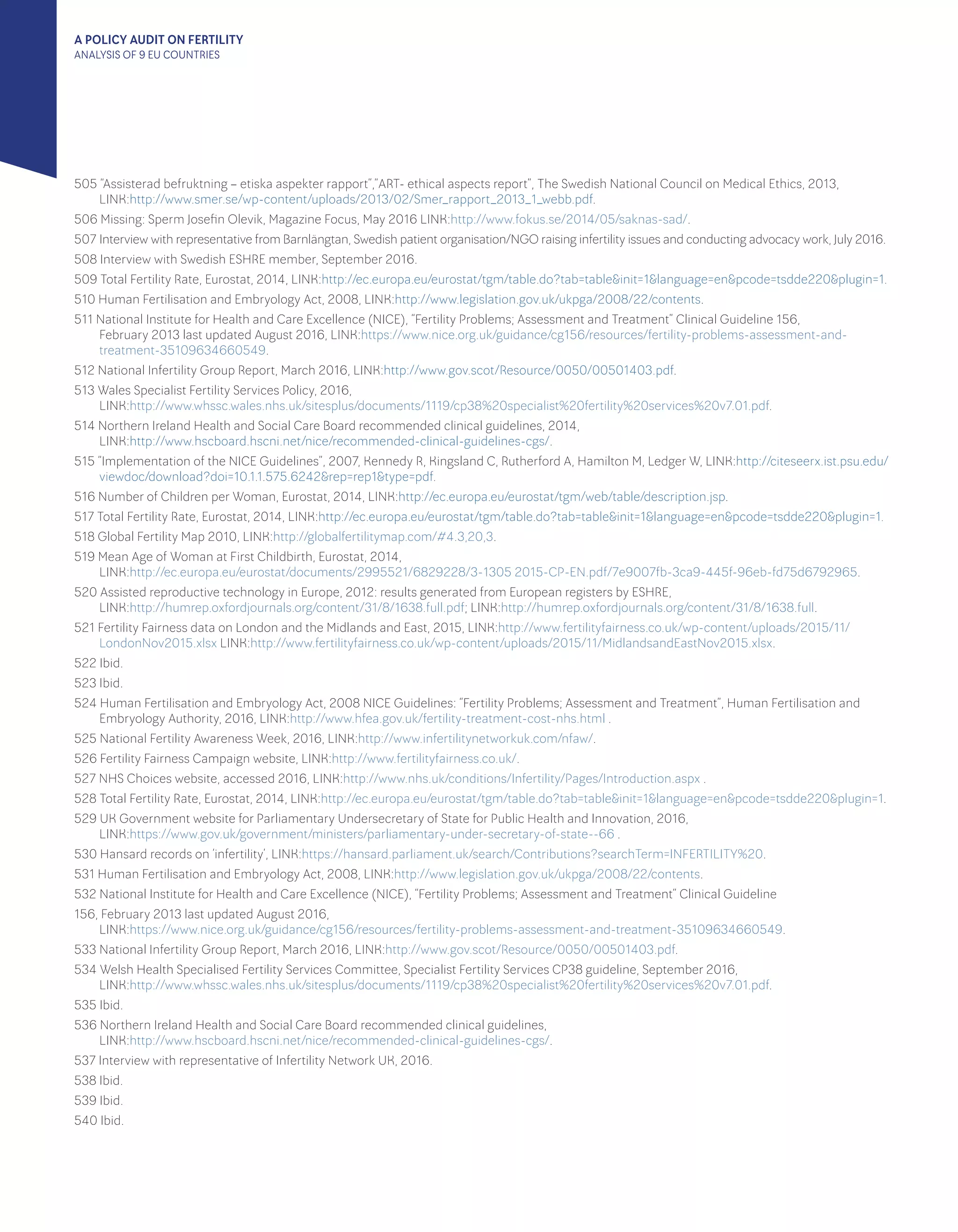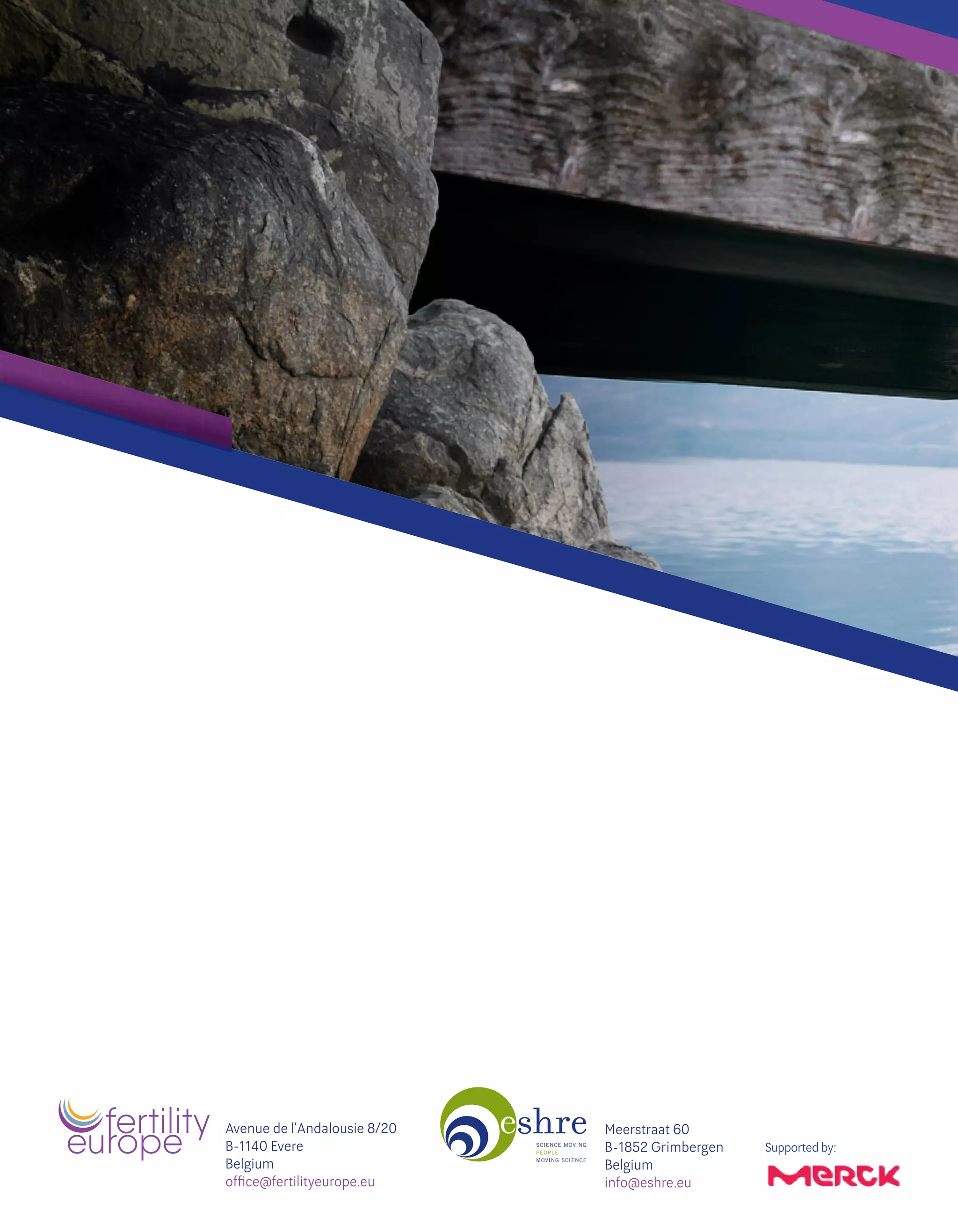This document provides a summary of a policy audit report on fertility that analyzed policies in 9 EU countries. It finds that over 25 million EU citizens are affected by infertility, though rates of infertility are difficult to compare across countries due to different data methodologies. Fertility rates in the 9 countries range from 1.32 in Spain and Poland to 2.01 in France. The report includes country profiles of fertility policies, diagnosis and treatment availability, funding, and awareness efforts in each of the Czech Republic, France, Germany, Italy, Poland, Romania, Spain, Sweden, and the UK.
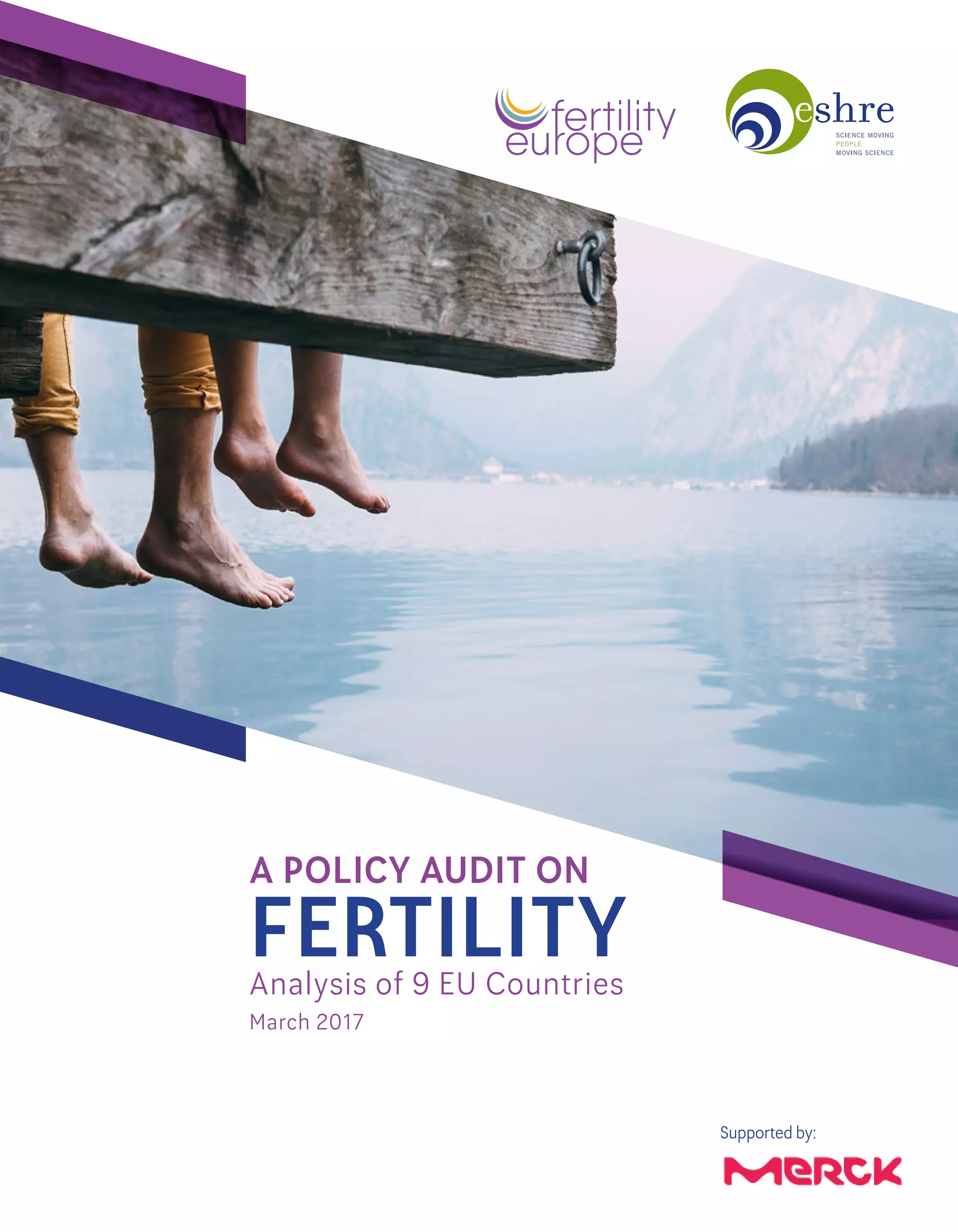
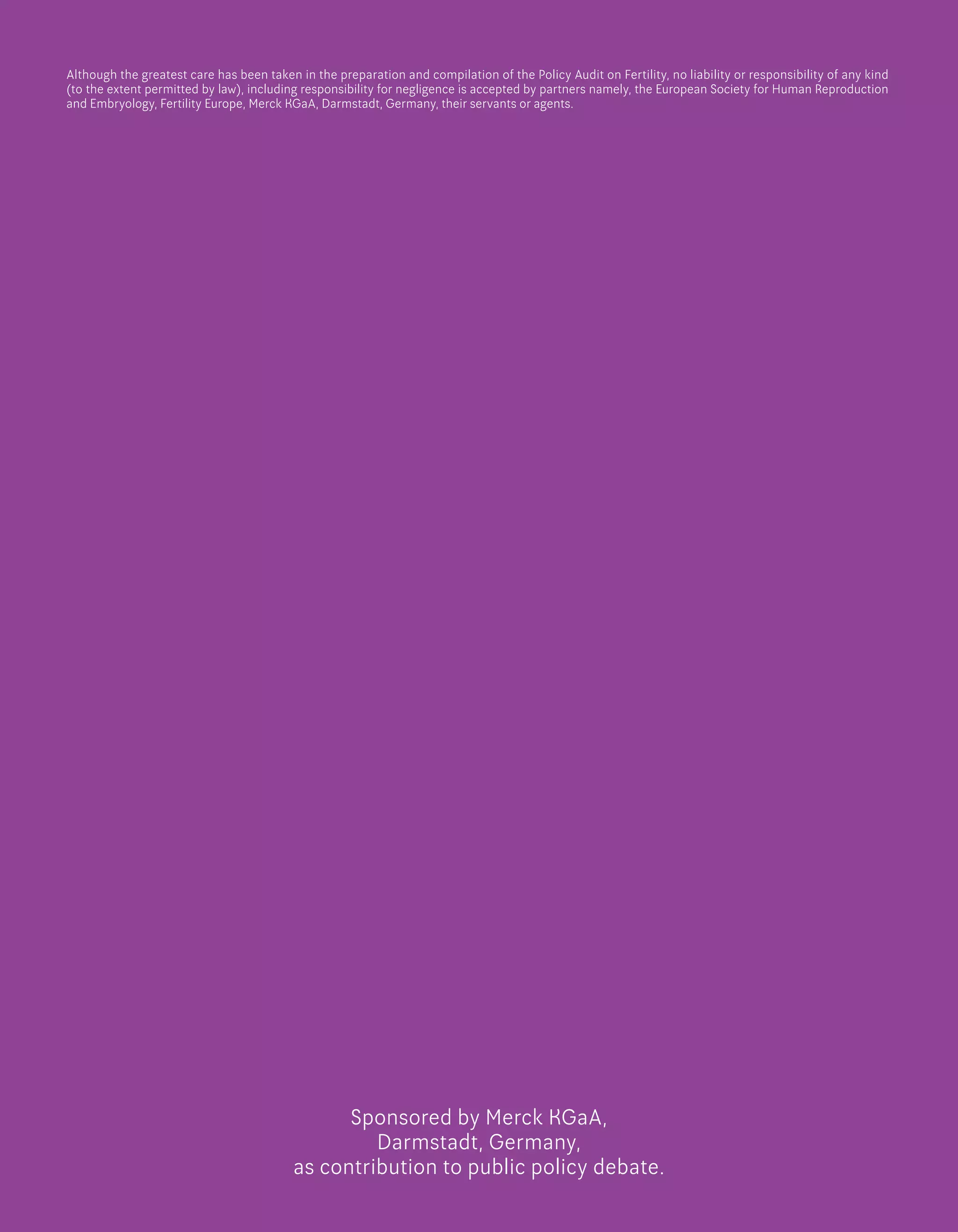
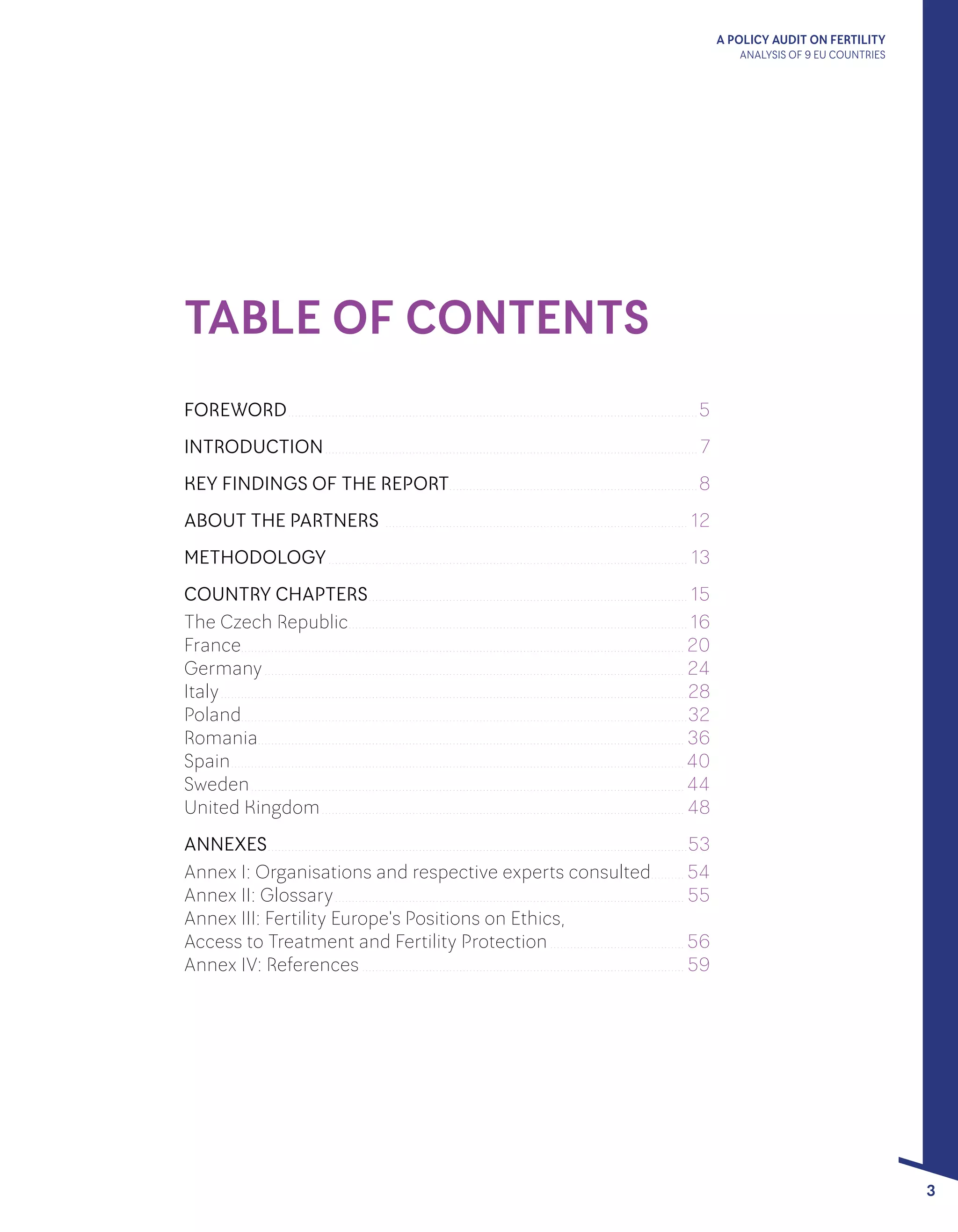

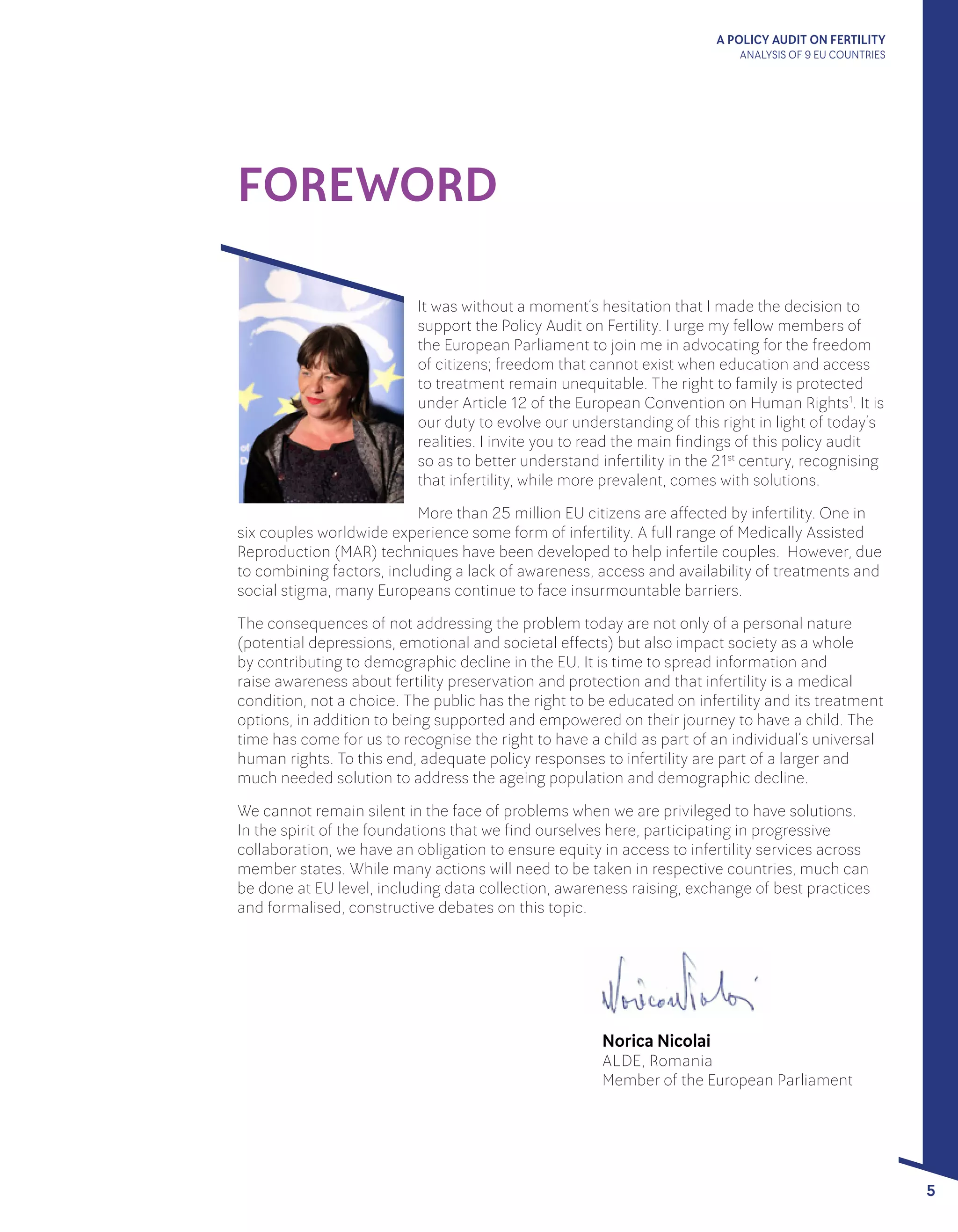
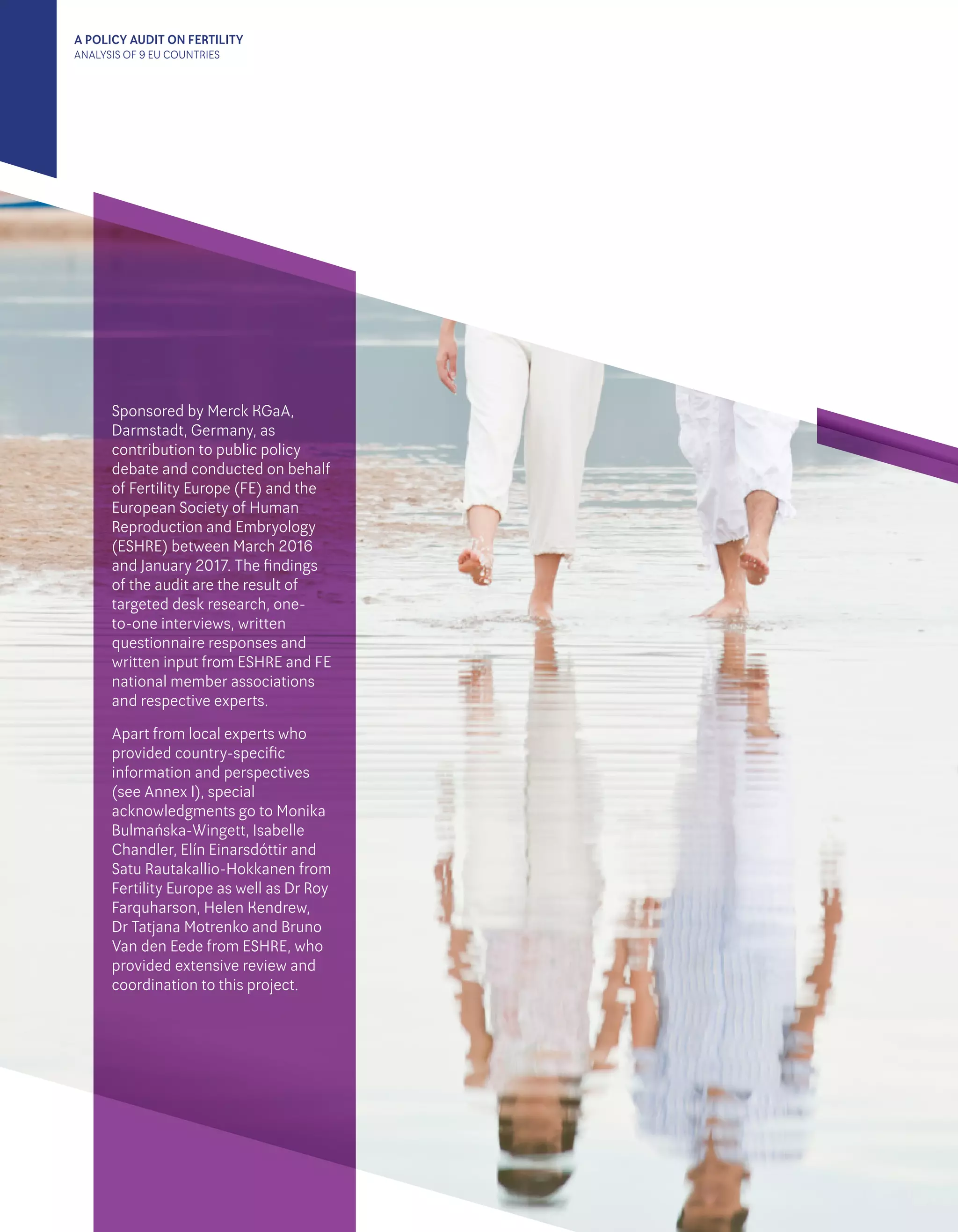


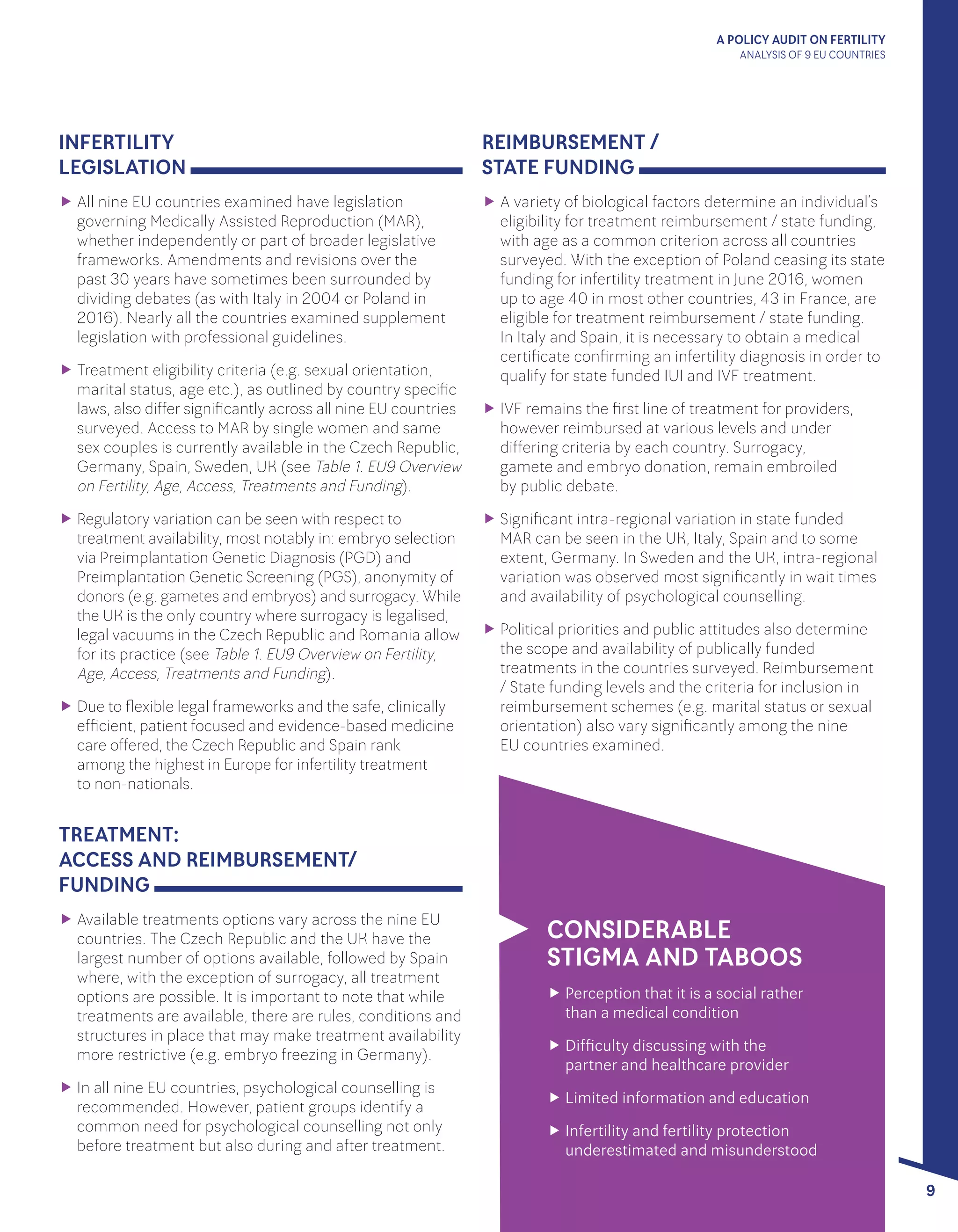


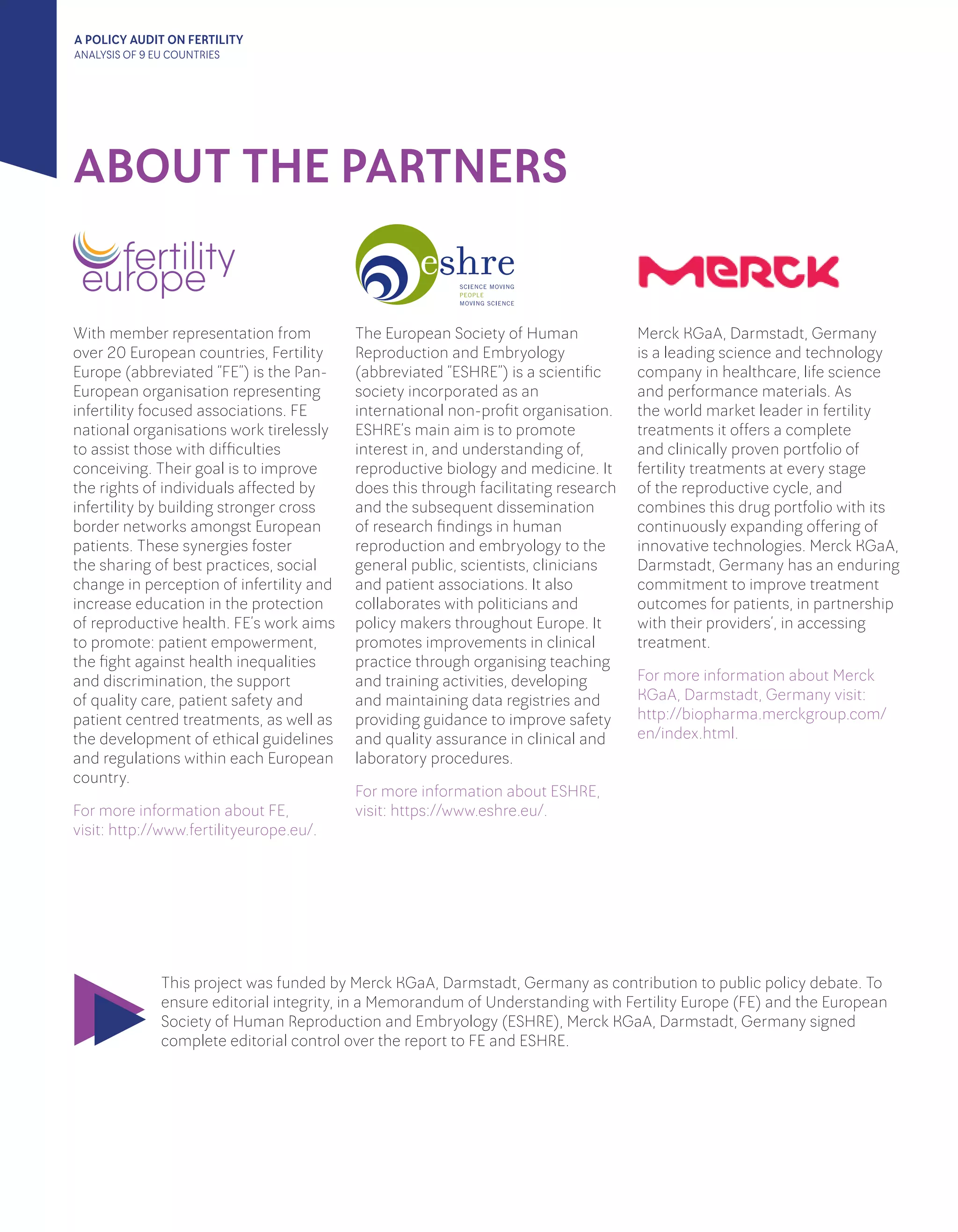






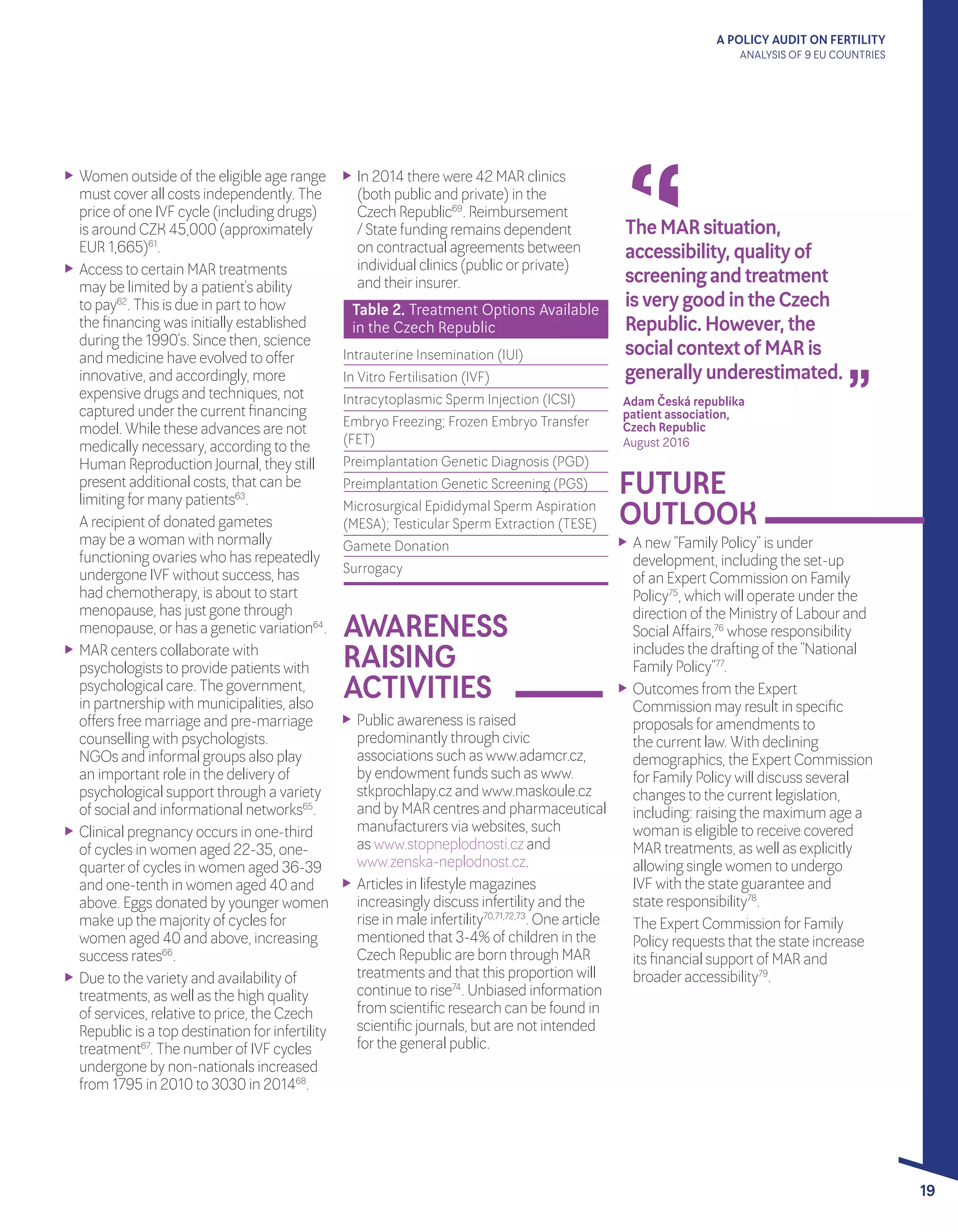
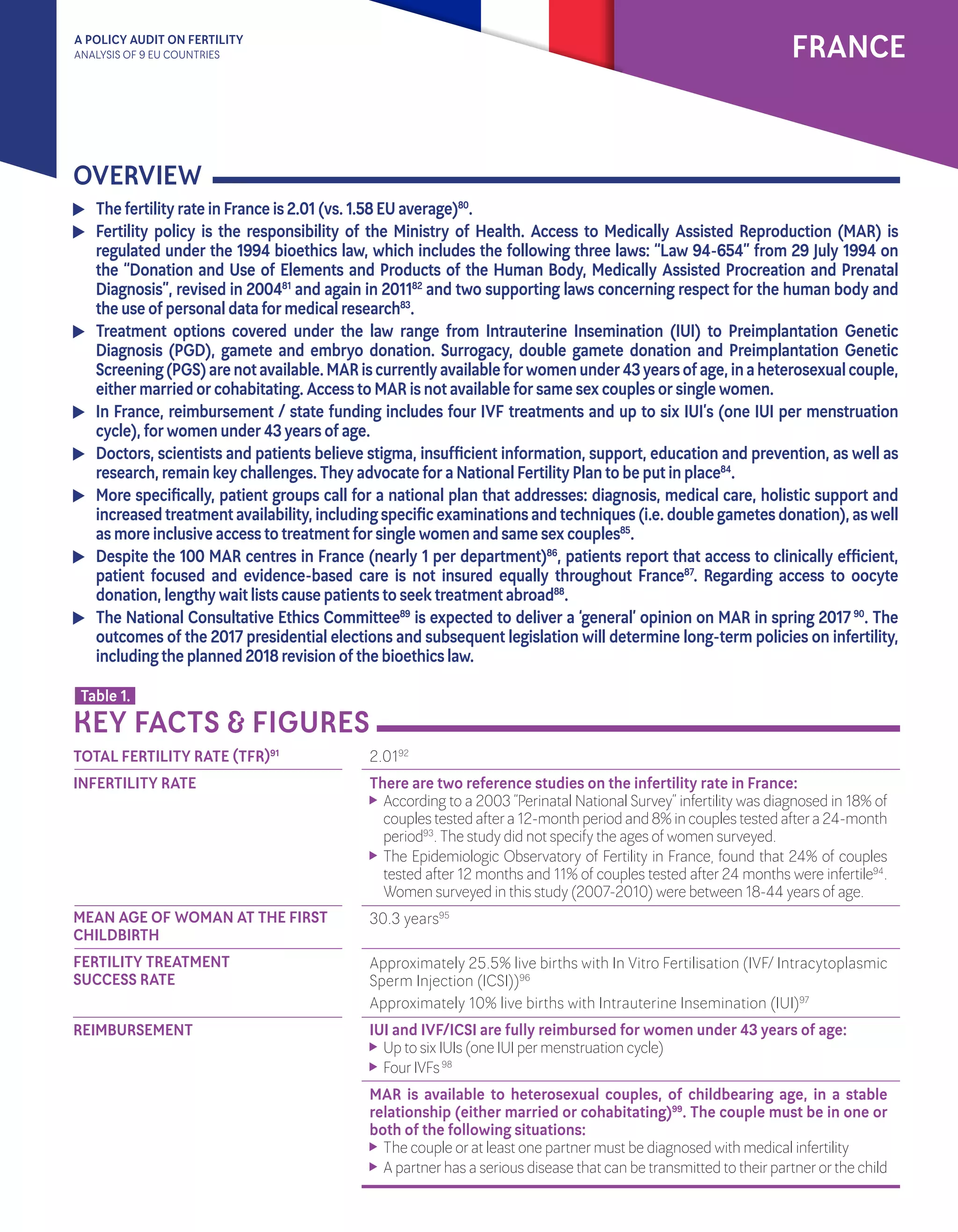



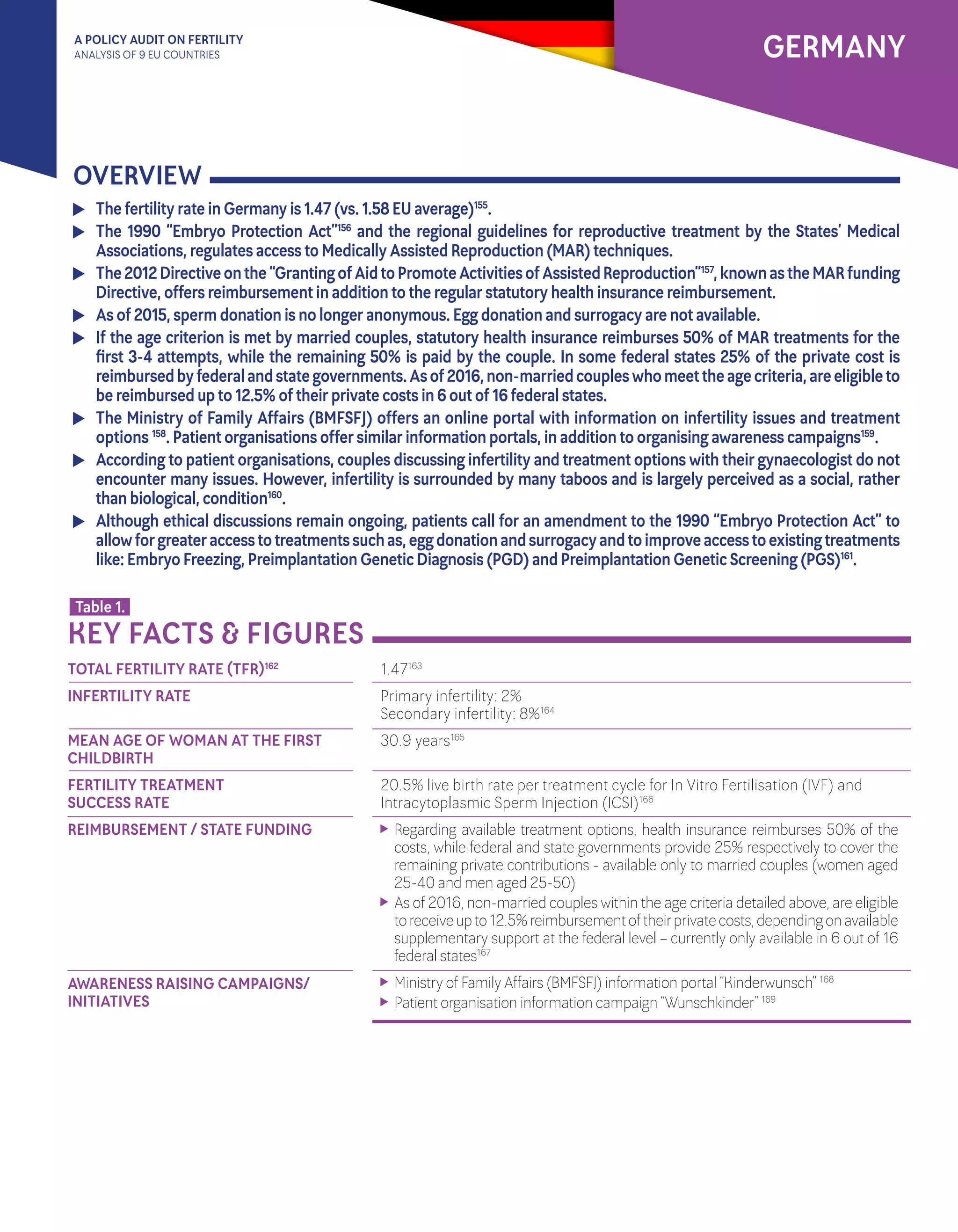






![A POLICY AUDIT ON FERTILITY
ANALYSIS OF 9 EU COUNTRIES
31
FUTURE
OUTLOOK
State funded MAR treatments (IVF
and IUI) are only available to couples
upon presentation of a “Certificate of
Infertility”247
.
The “National Fertility Plan” launched
a regional network of ‘family advice
bureaus’ to act as the first point
of contact forindividuals seeking
information on reproductive health
promotion, prevention and psychosocial
support248
.
With regional variation in MAR
treatments, lengthy wait lists (e.g. 29%
of couples reported waiting overa year
to access treatment from a publicly
funded MAR centre in theirregion)249
,
have led to the practice of “inter-regional
health tourism”, with some regions
gaining a national reputation amongst
infertile patients. The phenomenon
ended when public funding from
(typically southern) regions forthese
national centres stopped250
.
The success rate of IUI and IVF in 2014
remained relatively unchanged and
in line with EU data, with an average
success rate of 10% forIUI and 19.4%
forIVF using fresh gametes251
. The data
represents an average across all age
groups.
As of 2015, Italy has 63 public and 95
private MAR clinics252
.
Sources from national patient
associations262
have reported that the
issue of sexual health and infertility
has remained highly politicised and
controversial foryears. This has
influenced policy decisions on the
implementation of government
programmes around raising awareness
about infertility, resulting in campaigns
that did not reflect scientific evidence
on infertility263
.
As announced in July 2016264
and
in response to the calls from major
national patient associations and
scientific communities265
, the Ministry
of Health reformed the basket of
publically funded healthcare services
to include all fertility treatments (the
so called “LEA” - “Livelli essenziali di
assistenza” - ‘Essential levels of care’)
to ensure consistency across the
country266
. As the reform has just been
approved, implementation is expected
to begin.
The inclusion of “free at the point
of delivery” MAR treatments, along
with otherexpected initiatives, are
an achievement on the ambitious
objectives set forth by the National Plan
forFertility267
, and give an optimistic
outlook forfuture development in
standards of care and accessibility to
MAR.Whilenationalpatientassociations
welcomethesemeasures,theyhighlight
theneedtoamendthenewlawin
alignmentwiththepreviousprovisions
of“Lawn.40/2004”,soastoguarantee
consistentapplicationofthelawas
interpretedbytheConstitutionalCourt.
Table 2. Treatment Options
Available in Italy
Intrauterine Insemination (IUI)
In Vitro Fertilisation (IVF)
Intracytoplasmic Sperm Injection (ICSI)
Embryo Freezing; Frozen Embryo Transfer
(FET)
Preimplantation Genetic Diagnosis (PGD)
Preimplantation Genetic Screening (PGS)
Testicular Sperm Extraction (TESE)
Gamete Donation
AWARENESS
RAISING
ACTIVITIES
In the last five years, the main awareness
campaigns on infertility focused on
informing individuals about the role
fertility plays in theirlives and biological
duration /protection through avoidance
of unhealthy lifestyle choices.
The majority of stakeholders involved
are fertility clinics253
and pharmaceutical
manufacturers in partnership with
policymakers254
, scientific societies255
and patient associations256
.
State funded campaigns aim to educate
individuals on the issue of infertility
and the importance of protection as
per“Article 2” of “Law n. 40”. Every
year, the Ministry of Health allocates
funding forinitiatives such as: print and
digital communication campaigns, in
partnership with scientific societies
(e.g. the Italian Society of Gynecology
and Obstetrics)257
and Universities258
,
with the aim of facilitating specialist led
public seminars on fertility protection.
The Ministry of Health also manages
the online registry (Registro Nazionale
Procreazione Medicalmente Assistita)
that contains information on all
authorised MAR centres (public and
private). This allows forthe monitoring
of activity, the provision of practical
answers to frequently asked questions
and guidance on how to consult fertility
specialists.
The Ministry of Health launched an
ad-hoc public network of ‘family advice
bureaus’ (consultori familiari)259
, to acts
as a first point of contact forfamilies
seeking information on: reproductive
health promotion, protection and
psychosocial support.
On 22 September2016, as part of the
“National Fertility Plan” the Ministry
of Health organised a National
Fertility Day260
, during which a series
of awareness raising initiatives in
collaboration with ‘local health
corporations’ (aziende sanitarie locali
[ASLs]), scientific societies and patient
organisations took place across all major
cities. Promotional leaflets from the
campaign sparked public criticism on
social media, as they seemed to blame
women forputting off child-bearing,
appearing uninformed as to the real
causes of Italy’s low birth rate261
.](https://image.slidesharecdn.com/epaffinal-170324121003/75/EPAF-final-31-2048.jpg)
